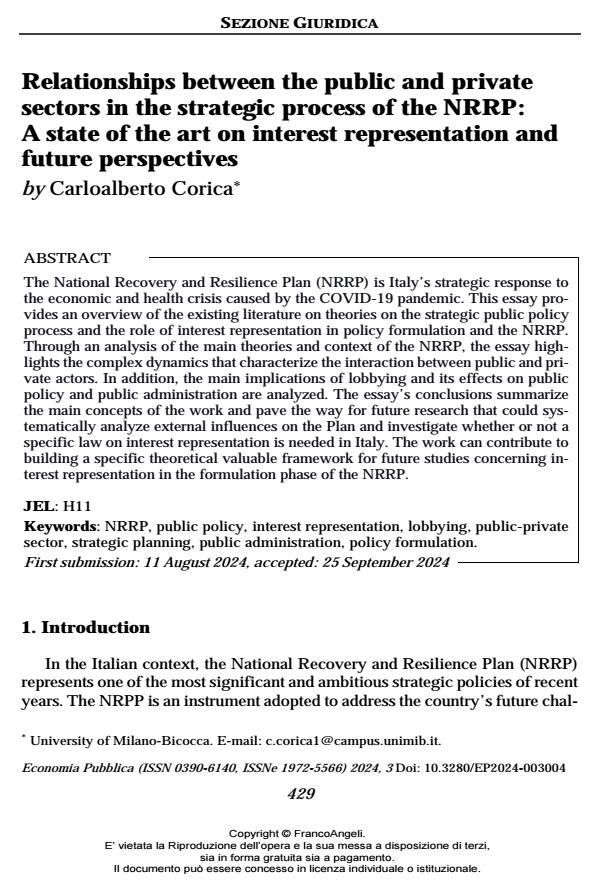Relationships between the public and private sectors in the strategic process of the NRRP: A state of the art on interest representation and future perspectives
Journal title ECONOMIA PUBBLICA
Author/s Carloalberto Corica
Publishing Year 2024 Issue 2024/3
Language English Pages 17 P. 429-445 File size 80 KB
DOI 10.3280/EP2024-003004
DOI is like a bar code for intellectual property: to have more infomation
click here
Below, you can see the article first page
If you want to buy this article in PDF format, you can do it, following the instructions to buy download credits

FrancoAngeli is member of Publishers International Linking Association, Inc (PILA), a not-for-profit association which run the CrossRef service enabling links to and from online scholarly content.
The National Recovery and Resilience Plan (NRRP) is Italy’s strategic response to the economic and health crisis caused by the COVID-19 pandemic. This essay provides an overview of the existing literature on theories on the strategic public policy process and the role of interest representation in policy formulation and the NRRP. Through an analysis of the main theories and context of the NRRP, the essay highlights the complex dynamics that characterize the interaction between public and private actors. In addition, the main implications of lobbying and its effects on public policy and public administration are analyzed. The essay’s conclusions summarize the main concepts of the work and pave the way for future research that could systematically analyze external influences on the Plan and investigate whether or not a specific law on interest representation is needed in Italy. The work can contribute to building a specific theoretical valuable framework for future studies concerning interest representation in the formulation phase of the NRRP.
Keywords: NRRP, public policy, interest representation, lobbying, public-private sector, strategic planning, public administration, policy formulation.
Jel codes: H11
Carloalberto Corica, Relationships between the public and private sectors in the strategic process of the NRRP: A state of the art on interest representation and future perspectives in "ECONOMIA PUBBLICA " 3/2024, pp 429-445, DOI: 10.3280/EP2024-003004